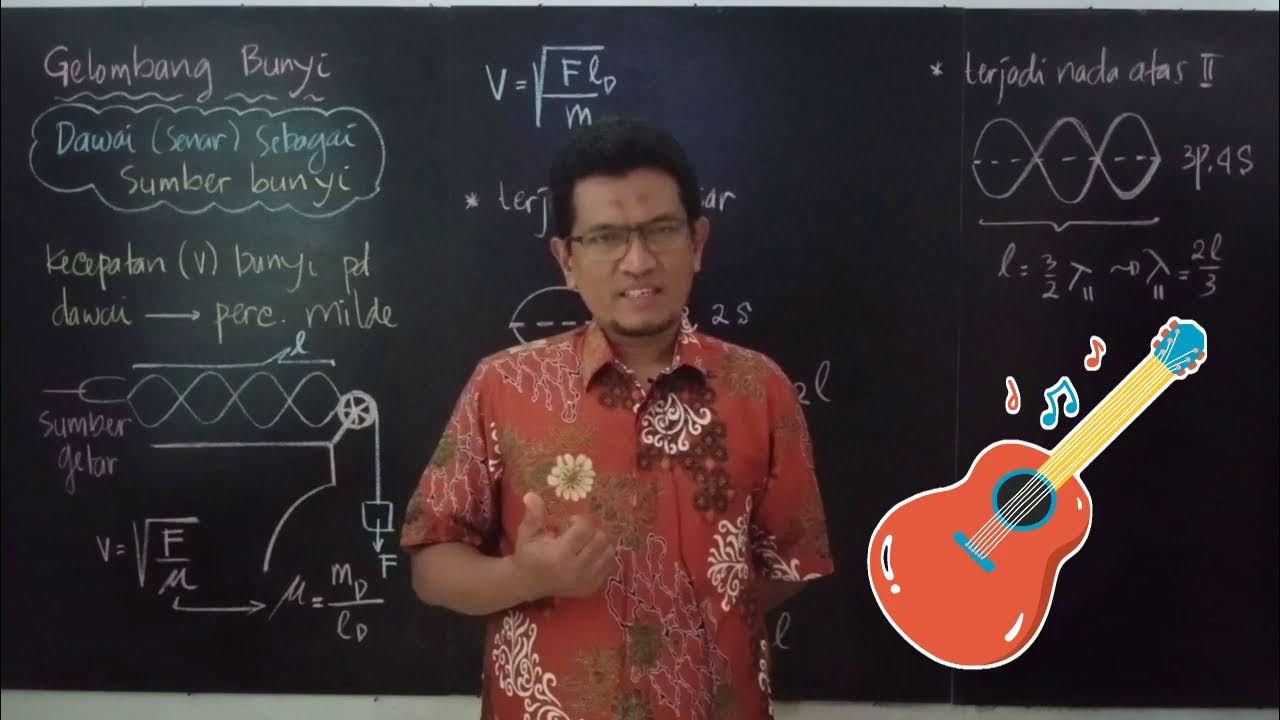The Physics of Music: Crash Course Physics #19
Summary
TLDRThis video explores the science behind musical instruments, focusing on how sound is produced through standing waves in strings and pipes. It explains key concepts like nodes, antinodes, and harmonics, detailing the differences in wave behavior for instruments with fixed or open ends. By illustrating how standing waves create various musical notes, the video highlights the relationship between wave frequency and instrument tuning, demonstrating why different instruments sound unique even when playing the same note. Overall, it emphasizes the blend of art and science in music creation.
Takeaways
- 🎶 String instruments create sound through vibrating strings, producing standing waves.
- 🔊 Standing waves appear still and are formed by the reflection and interference of waves.
- 📏 Nodes are points in a standing wave that do not oscillate, while antinodes are points of maximum oscillation.
- 🎼 The fundamental wave is the simplest standing wave, while overtones are more complex waves with additional nodes and antinodes.
- 🧮 The number of wavelengths in a standing wave relates to the harmonic number: the fundamental has one, the second harmonic has two, and so on.
- ⚡ The frequency of a standing wave can be calculated using its wavelength and the wave's velocity in the medium.
- 🔗 In a string fixed at both ends, the fundamental frequency is half the wavelength of the string's length.
- 🎺 Open pipes (like flutes) have different properties than closed pipes, affecting their harmonics and sound production.
- 🚫 Pipes closed at one end cannot produce even-numbered harmonics due to the requirement for nodes and antinodes.
- 🎵 Different musical instruments create unique sounds even for the same note because of their harmonic structures and amplitudes.
Q & A
What is the difference between longitudinal waves and standing waves?
-Longitudinal waves oscillate in the same direction as they travel, while standing waves appear stationary, resulting from the interference of two waves reflecting back on themselves.
What are nodes and antinodes in a standing wave?
-Nodes are points in a standing wave that do not oscillate, while antinodes are points where the oscillation reaches its maximum height.
How do fixed and loose ends affect wave reflection?
-At a fixed end, the wave inverts upon reflection, turning crests into troughs. At a loose end, the wave reflects without inversion.
What is the fundamental frequency, and how is it determined?
-The fundamental frequency is the lowest frequency of a standing wave, determined by the length, mass, and tension of the string or the properties of the pipe.
What distinguishes the harmonics in a string fixed at both ends?
-In a string fixed at both ends, harmonics are multiples of the fundamental frequency, with each harmonic adding more nodes and antinodes.
How does the fundamental frequency relate to wavelength?
-For a string with fixed ends, the fundamental wave covers half a wavelength, allowing the frequency to be calculated as the wave's velocity divided by twice the length of the string.
What happens to the harmonics in a pipe that is closed at one end?
-A pipe closed at one end can only produce odd-numbered harmonics, as even-numbered harmonics would require a node at both ends or a peak at both ends, which is not possible.
Why do different instruments sound distinct even when playing the same note?
-Different instruments create a mix of the fundamental wave and various harmonics, with different amplitudes for each harmonic, leading to unique timbres.
What role does interference play in creating standing waves?
-Interference occurs when waves reflect and overlap, leading to areas of constructive and destructive interference that form nodes and antinodes in a standing wave.
How does the shape of the ends of a string or pipe influence the standing wave?
-The ends of the string or pipe determine whether the wave is reflected with inversion (fixed end) or without inversion (open end), affecting the characteristics of the standing wave.
Outlines

This section is available to paid users only. Please upgrade to access this part.
Upgrade NowMindmap

This section is available to paid users only. Please upgrade to access this part.
Upgrade NowKeywords

This section is available to paid users only. Please upgrade to access this part.
Upgrade NowHighlights

This section is available to paid users only. Please upgrade to access this part.
Upgrade NowTranscripts

This section is available to paid users only. Please upgrade to access this part.
Upgrade NowBrowse More Related Video

DAWAI (SENAR) SEBAGAI SUMBER BUNYI | Gelombang Bunyi #1 - Fisika Kelas 11

Gelombang Bunyi • Part 3: Sumber Bunyi (Dawai, Pipa Organa Terbuka dan Tertutup)

Animasi Fisika : Gelombang Bunyi dan Cahaya

IL SUONO E L'UDITO - scuola primaria e superiore

Where Music Meet Science Part 2: Timbre and Complex Waves

Saiba como funciona uma onda sonora e como se dá a percepção do som.
5.0 / 5 (0 votes)